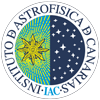Adam Burgasser

![]() Stay at the IAC: 15/09/2014 to 13/12/2014
Stay at the IAC: 15/09/2014 to 13/12/2014
Research line: Stellar and Interstellar Physics
Prof. Burgasser will give a Severo Ochoa seminar at the IAC on October 2nd 2014, entitled A Spectral Library for Characterizing the Coldest Stars, Brown Dwarfs and Extrasolar Planets.
Currently Dr. Burgasser is Associate Professor with tenure in the Department of Physics of the University of California San Diego (U.S.A.).
Adam Burgasser finished his PhD at the California Institute of Technology in 2001. His thesis research on the coldest known brown dwarfs (very low mass stars incapable of hydrogen fusion) led to the designation of a new stellar spectral class, the T dwarfs. After working as a Hubble Postdoctoral Fellow at the University of California, Los Angeles, and then as a Spitzer Postdoctoral Fellow at the American Museum of Natural History in New York City, Professor Burgasser joined the Physics faculty at MIT in July 2005. He also served as graduate affiliate faculty at the Institute for Astronomy at the University of Hawaii (2008-2011). Since 2009, he is professor at the Department of Physics of the University of California San Diego.
Adam Burgasser is one of the world experts in the field of substellar observational astrophysics. His research focuses on the properties of the lowest mass stars, coldest brown dwarfs and exoplanets. He is particularly interested in characterizing and understanding the atmospheres of L, T, and Y dwarfs, as well as searching for multiple systems, studying magnetic activity, and measuring population statistics. He employs a variety of observational techniques in his work: optical and infrared spectroscopy, high resolution imaging, radio astronomy, space-based observations, and photometric and spectroscopic monitoring. His key results over the past 15 years include the discovery of very low temperature brown dwarfs in the Two Micron All Sky Survey (2MASS) and other surveys; the definition of the T spectral class; the discovery of the first L-type subdwarfs and halo brown dwarfs; the use of low resolution spectroscopy to characterize the physical properties of L and T dwarfs; identification of the “J-band bump” and flux reversal binaries at the L/T transition, and development of the “cloud break-up” model to explain these features; and creation of the spectral binary method to identify L dwarf/T dwarf binaries.
The collaboration between the brown dwarf group at the IAC and Adam Burgasser aims at characterizing and classifying the coldest and most metal-poor low-mass stars and brown dwarfs in our Galaxy. The main scientific objectives of Adam Burgasser’s visit are three-fold:
1) Design the first near-infrared spectral classification scheme for metal-poor stars and brown dwarfs using a large sample of metal-poor objects obtained independently by the IAC group and Burgasser;
2) Search for lithium in absorption in the optical spectrum of the brightest L subdwarf in the sky; and
3) Correlate the kinematics and atmospheric properties of ultracool subdwarfs by fitting the most recent state-of-the-art atmospheric models to optical/infrared spectral data and computing Galactic orbits.
Interview with Adam Burgasser: Working at the limit: the lowest mass stars, coldest brown dwarfs and exoplanets


